Despite having lived in the south of China for the best part of the last three years there was one striking place I had never visited; Macau (澳門). As a former Portuguese colony, Macau is classed as a special administrative region along with Hong Kong and retains a large degree of autonomy.
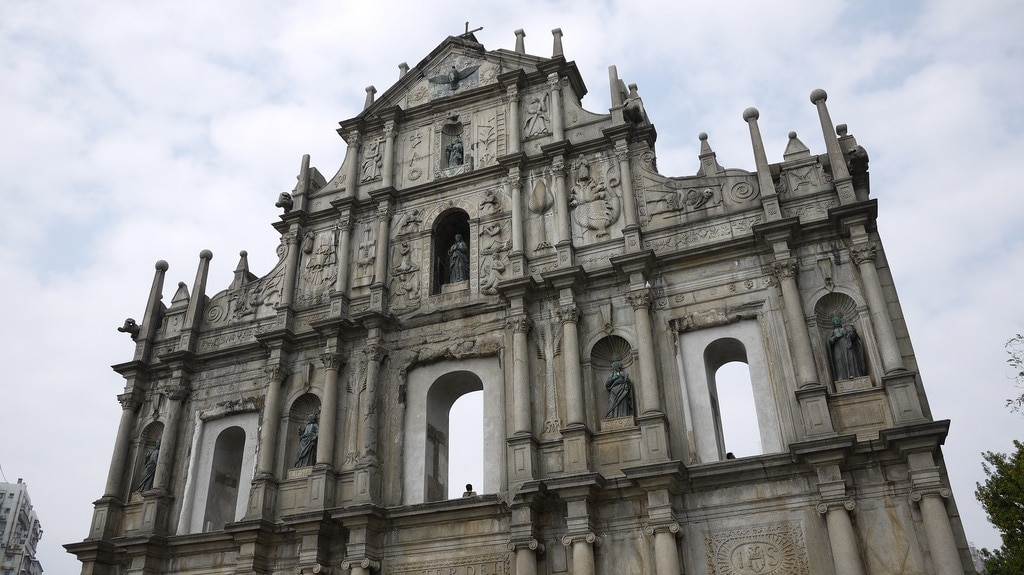
Macau is best known as Asia’s largest destination for gambling, taking in even more revenue than Las Vegas, but this side of things didn’t really interest me. Spanning two visits I took a long stroll through its historic centre and over the next four posts will present some of the sights in the world’s most densely populated region.
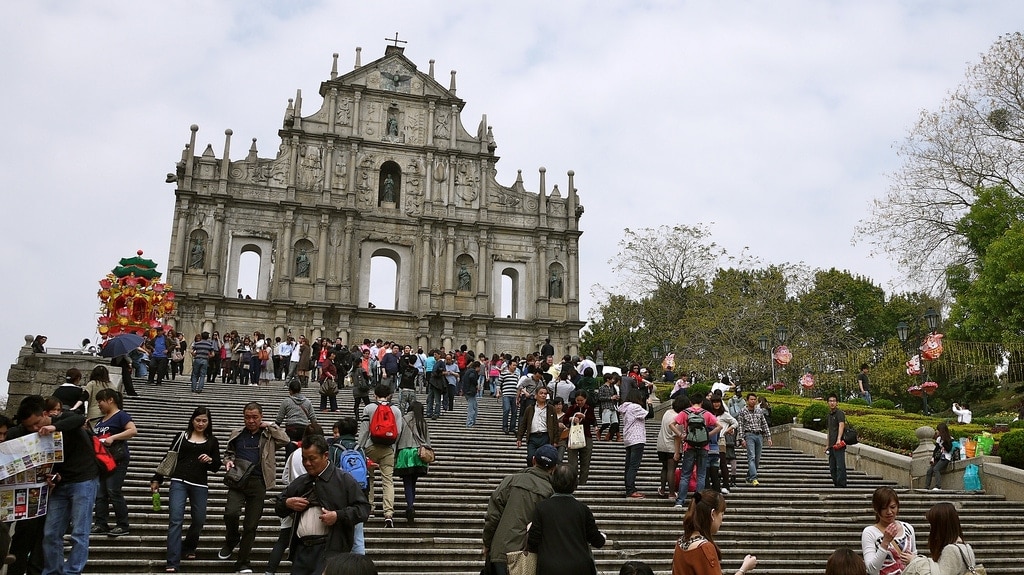
After taking the TurboJET ferry from Hong Kong, a trip of 1 hour, my first port of call was the Ruins of St. Paul’s (大三巴牌坊) which are one of Macau’s most famous landmarks. Today all that remains is the southern stone façade of the 16th-century Cathedral of St. Paul also known as “Mater Dei”.
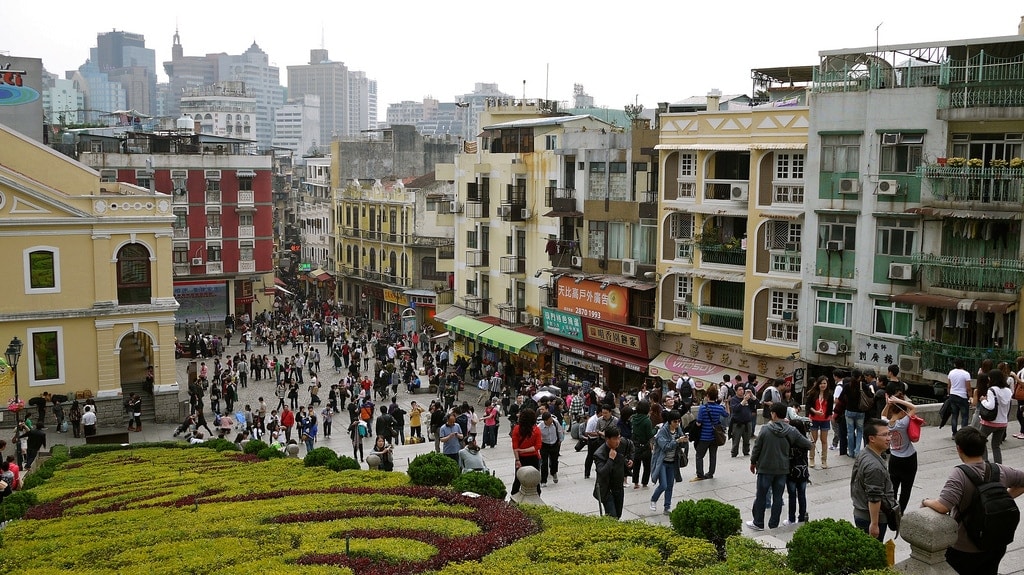
Having been carved by Japanese Christians in exile from their homeland the façade sits on a small hill which funnels thousands of visitors to its peak every day.
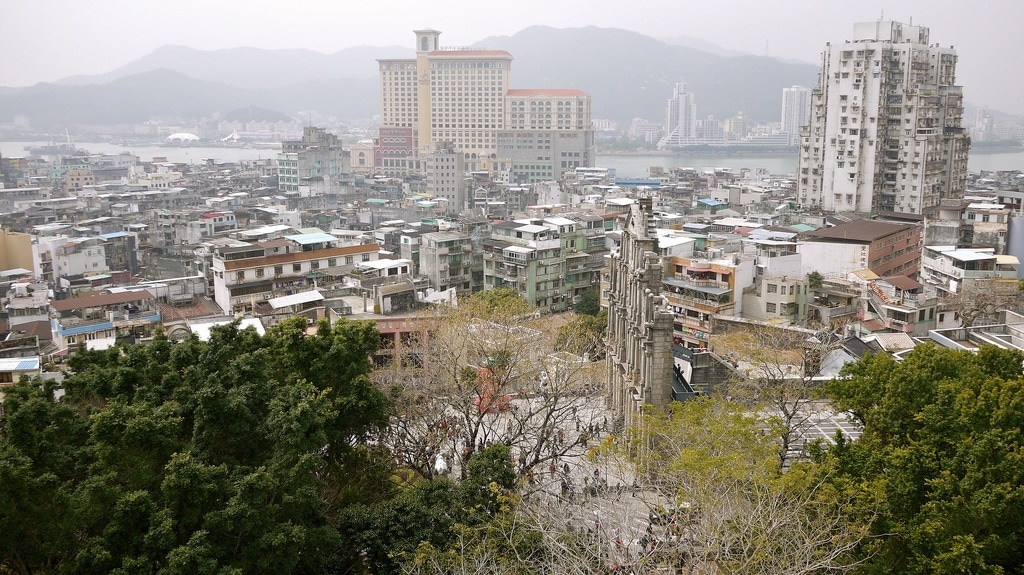
You can get a good view of the ruins and the surrounding city from Fortaleza do Monte or Mount Fortress (大炮台) which lies a short distance directly above.
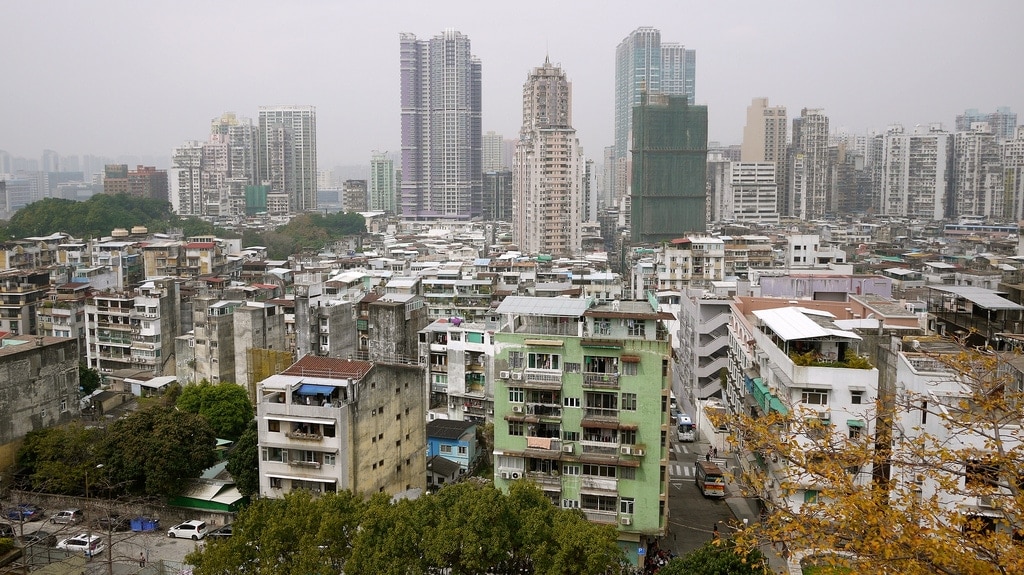
The fortress was also built in the 16th century by Jesuits and later became the city’s principal military defence.
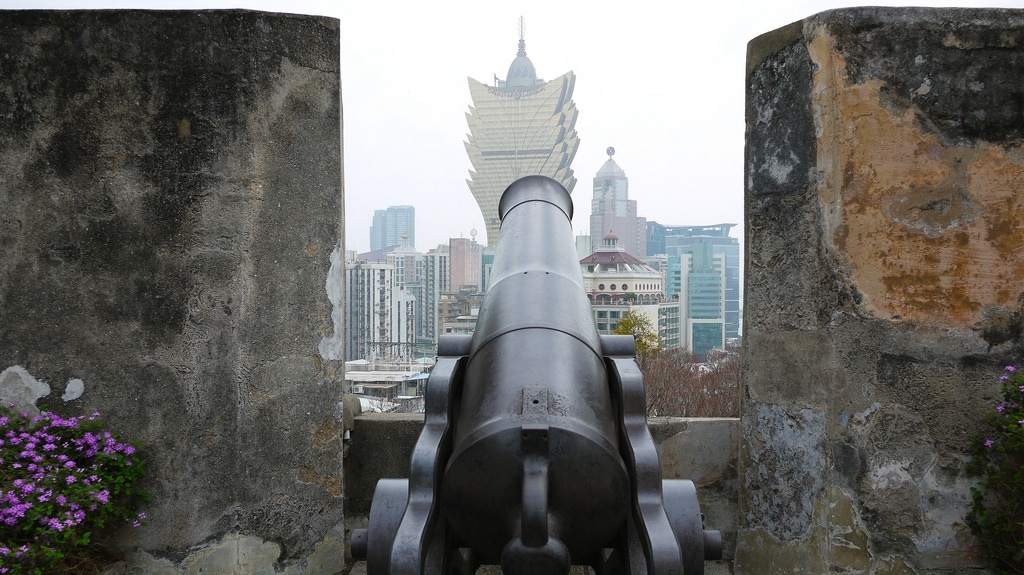
It was equipped with cannons, military barracks, wells and a large arsenal of ammunitions and supplies which would be sufficient for a prolonged siege.
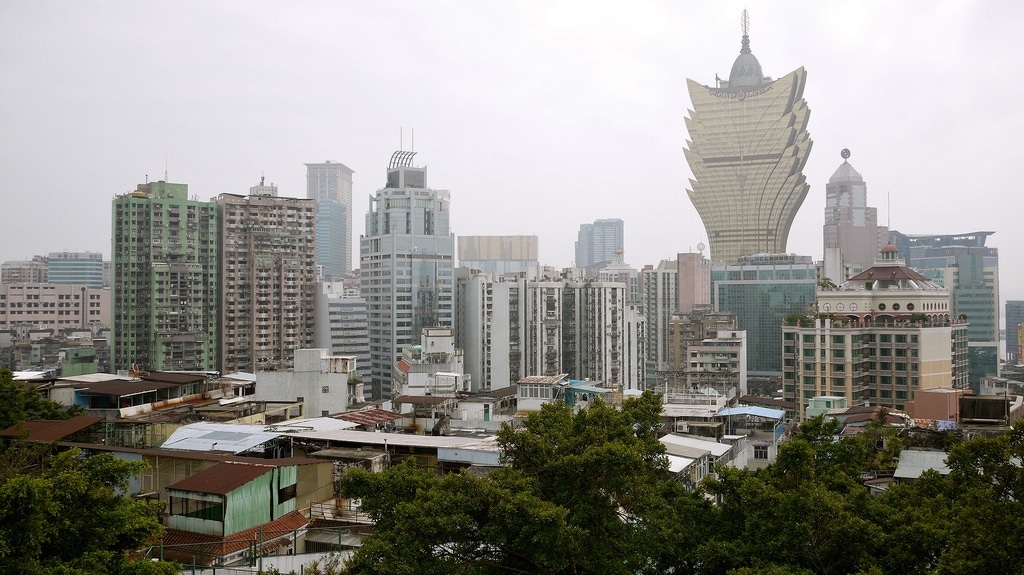
I liked the fact that all the cannons on one side of the trapezoid-shaped fortress mound seemed to be pointing at one of the ugly casinos in the distance.
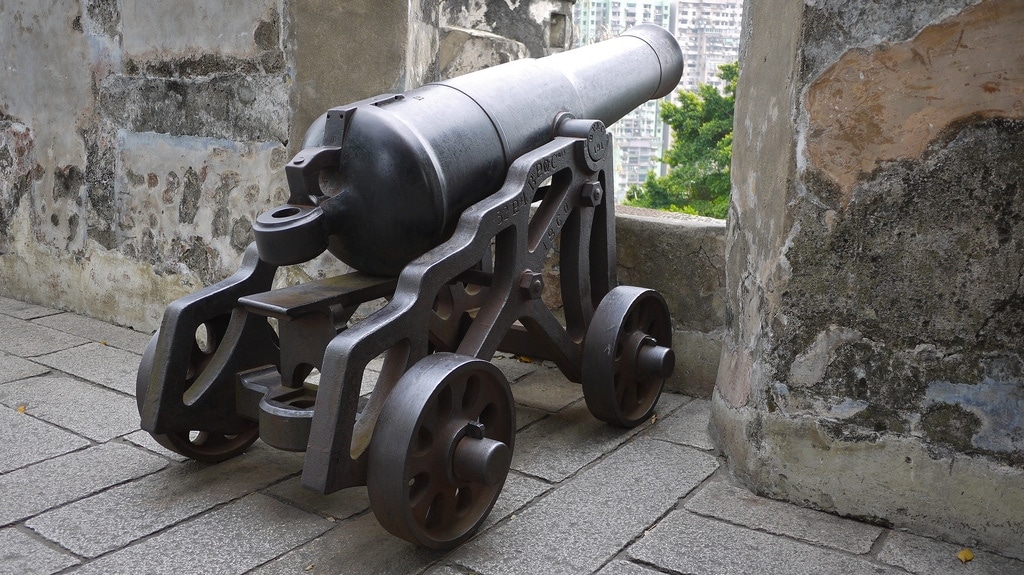
The Museum of Macau is located within the interior of the fortress but I was more interested in looking at the hardware on the roof! Slim and sleek they are not.
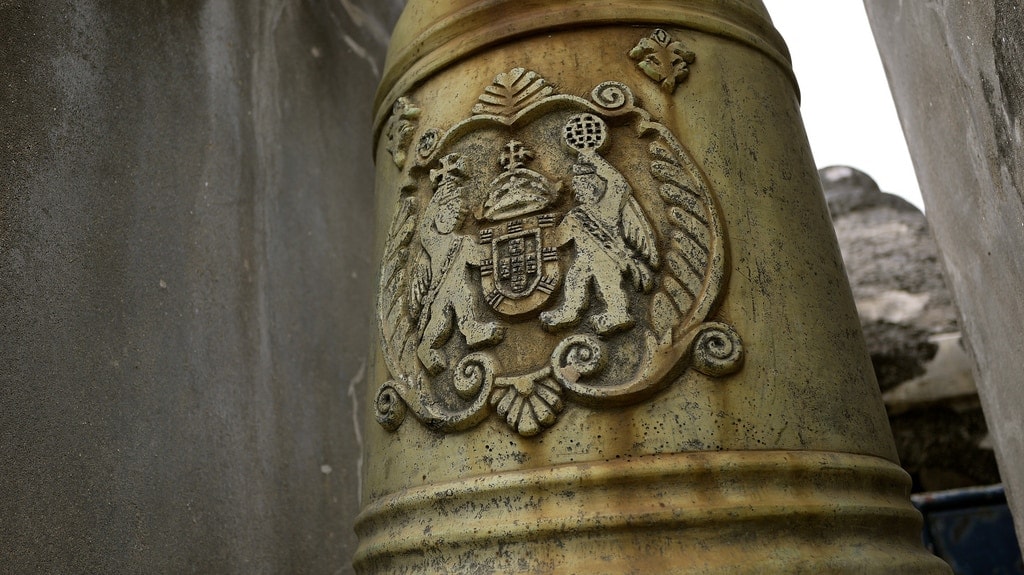
High up on the ramparts an old bell bearing the original coat of arms of Macau sits silently unused. One wonders what past events it has signalled.
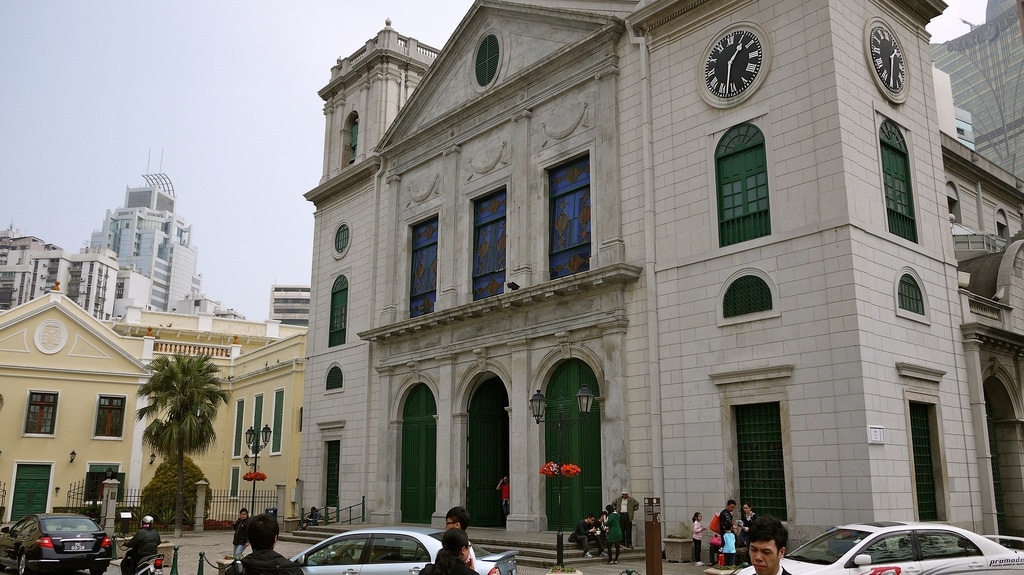
A short distance away the more modern-looking Cathedral of the Nativity of Our Lady of Macau stands clad in Shanghai plaster giving it an altogether different look (it was last rebuilt in the 1930s).
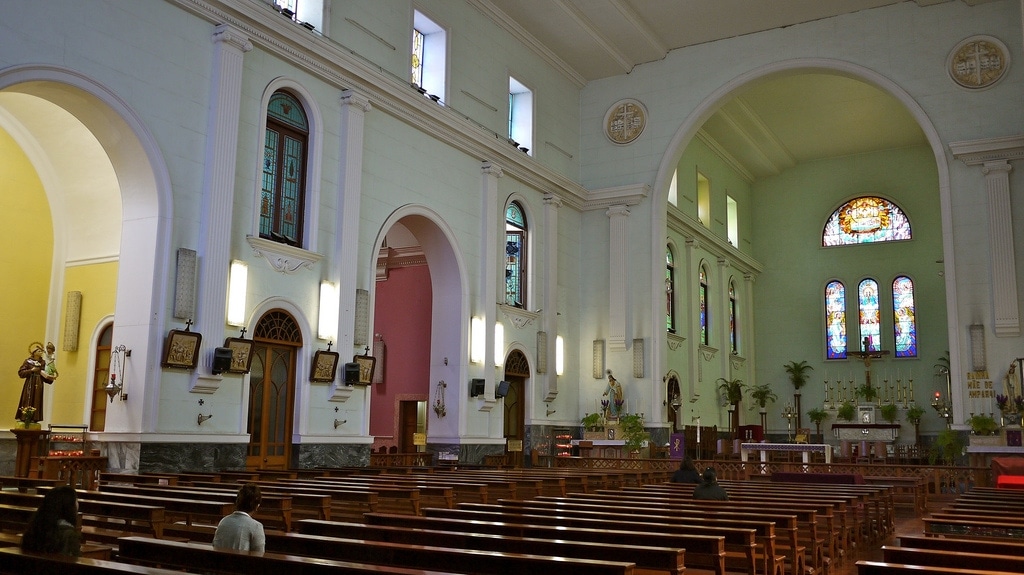
Inside the architecture is quite simple, with no columns in the middle, and well-lit by several stained glass windows as well as bright skylights in the side chapels.
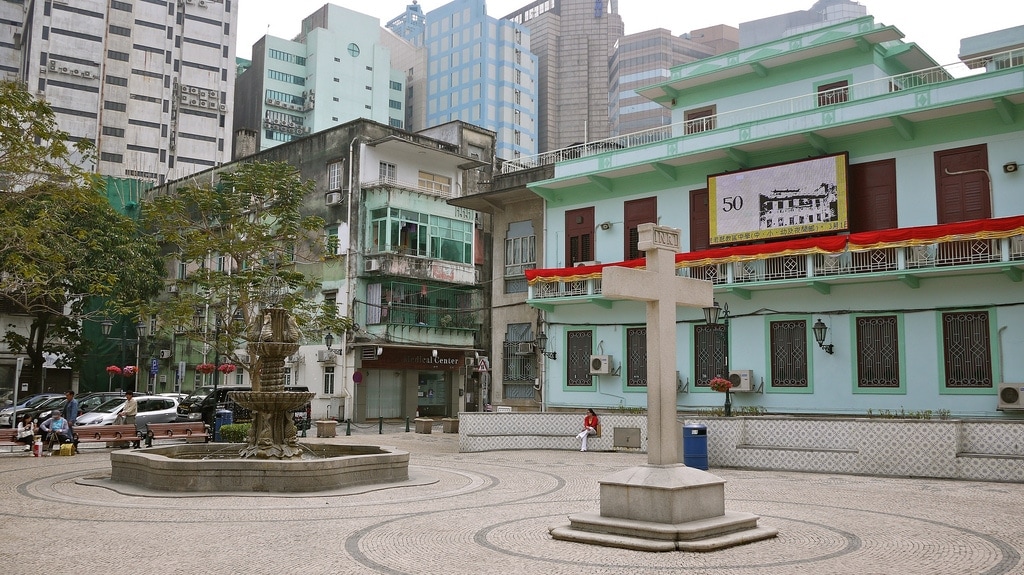
In front of the church a pleasant square, known as Plaza de Se, provides a nice place to relax after a long walk. It has the only classical fountain in Macau.
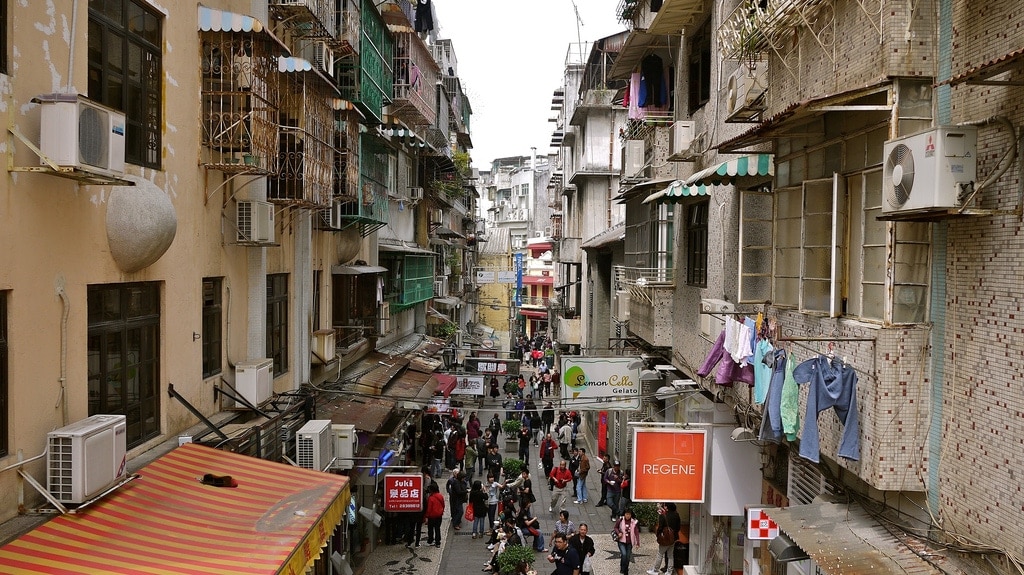
Behind the square, a busy street runs down the hill lined by small restaurants and a particularly good gelato shop. Since first trying it in Japan I have gained a penchant for green tea ice cream (抹茶アイスクリーム)!
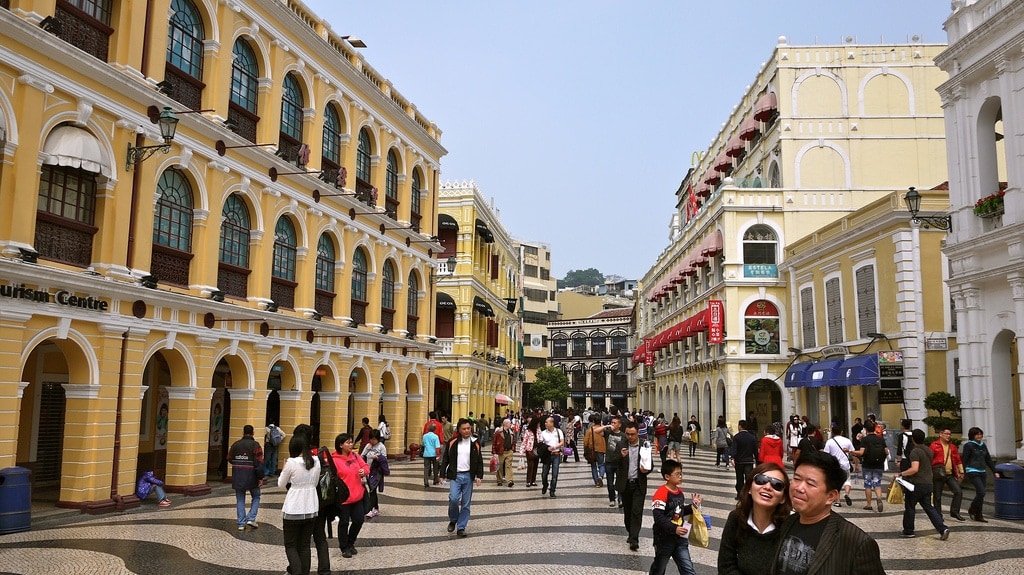
The surrounding narrow streets break out into Senado Square (議事亭前地) which is paved in the traditional Portuguese style with a wave-patterned mosaic of black and white stones.
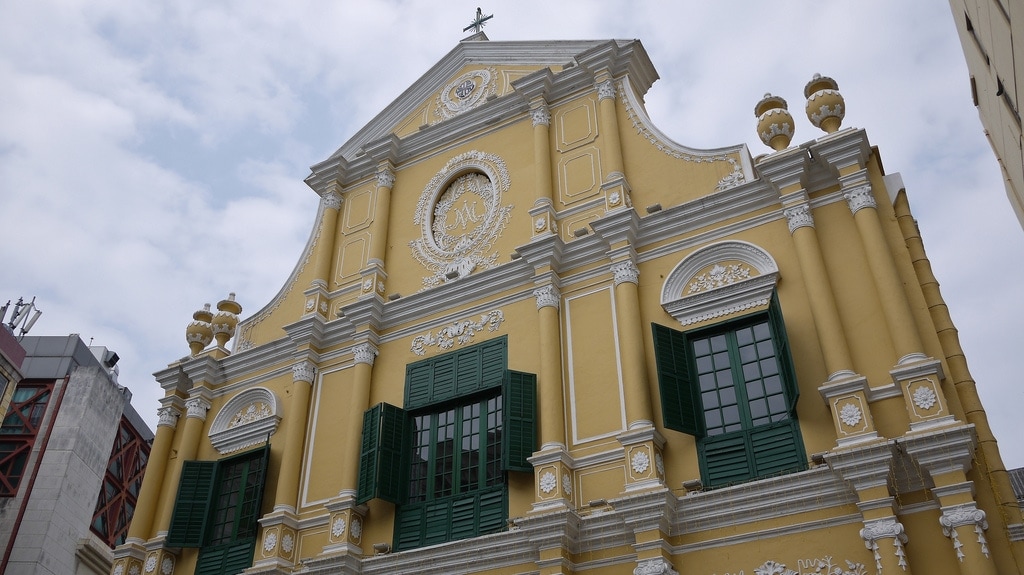
It’s enclosed by the buildings of the Leal Senado, the General Post Office, and St. Dominic’s Church (above). It was here where I encountered a Korean KBS film crew making a documentary about Macau – they wanted foreigners to be in some background shots to make it look more international!
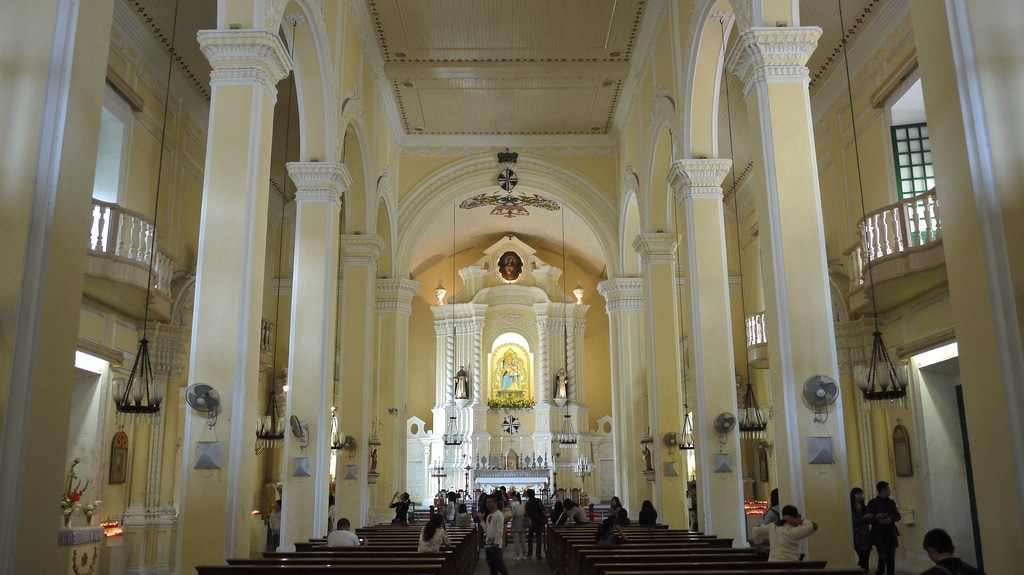
The calm interior is worth a quick look if only to escape the hordes of tourists outside.
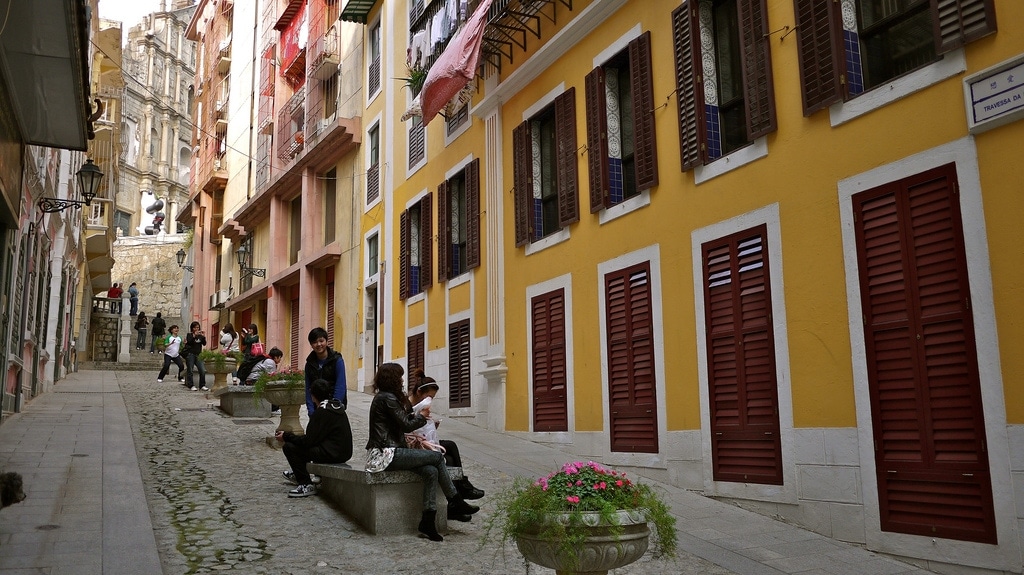
Coming full circle, looking up one of the nearby streets, we can see the Ruins of St. Paul’s again. In Part 2 we’ll escape the crowds to explore the back streets and a Taoist temple.

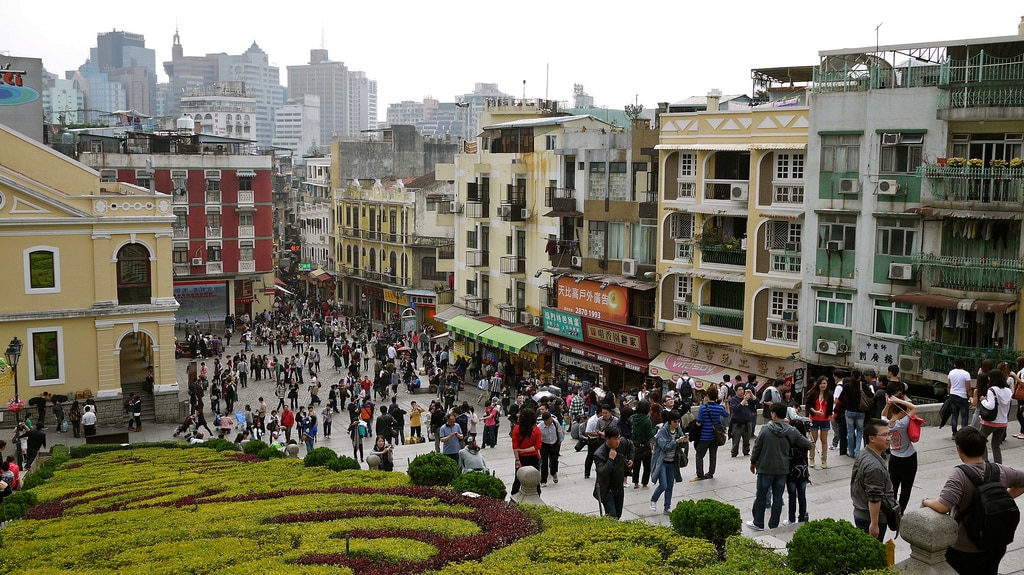
Reply